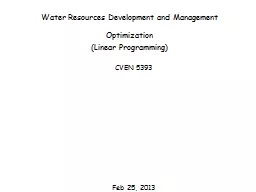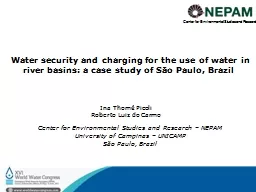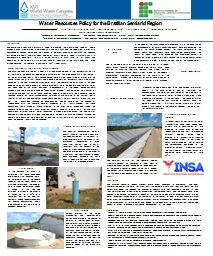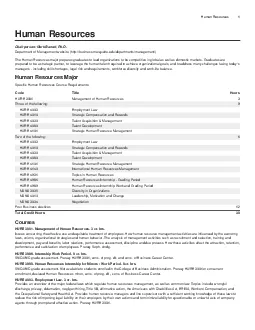PPT-Water Resources Development and Management
Author : calandra-battersby | Published Date : 2016-07-13
Optimization Linear Programming CVEN 5393 Feb 25 2013 Acknowledgements Dr Yicheng Wang Visiting Researcher CADSWES during Fall 2009 early Spring 2010 for slides
Presentation Embed Code
Download Presentation
Download Presentation The PPT/PDF document "Water Resources Development and Manageme..." is the property of its rightful owner. Permission is granted to download and print the materials on this website for personal, non-commercial use only, and to display it on your personal computer provided you do not modify the materials and that you retain all copyright notices contained in the materials. By downloading content from our website, you accept the terms of this agreement.
Water Resources Development and Management: Transcript
Download Rules Of Document
"Water Resources Development and Management"The content belongs to its owner. You may download and print it for personal use, without modification, and keep all copyright notices. By downloading, you agree to these terms.
Related Documents














